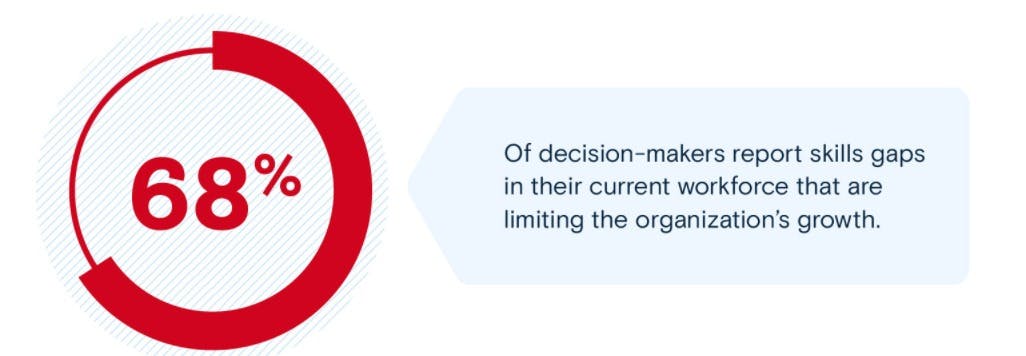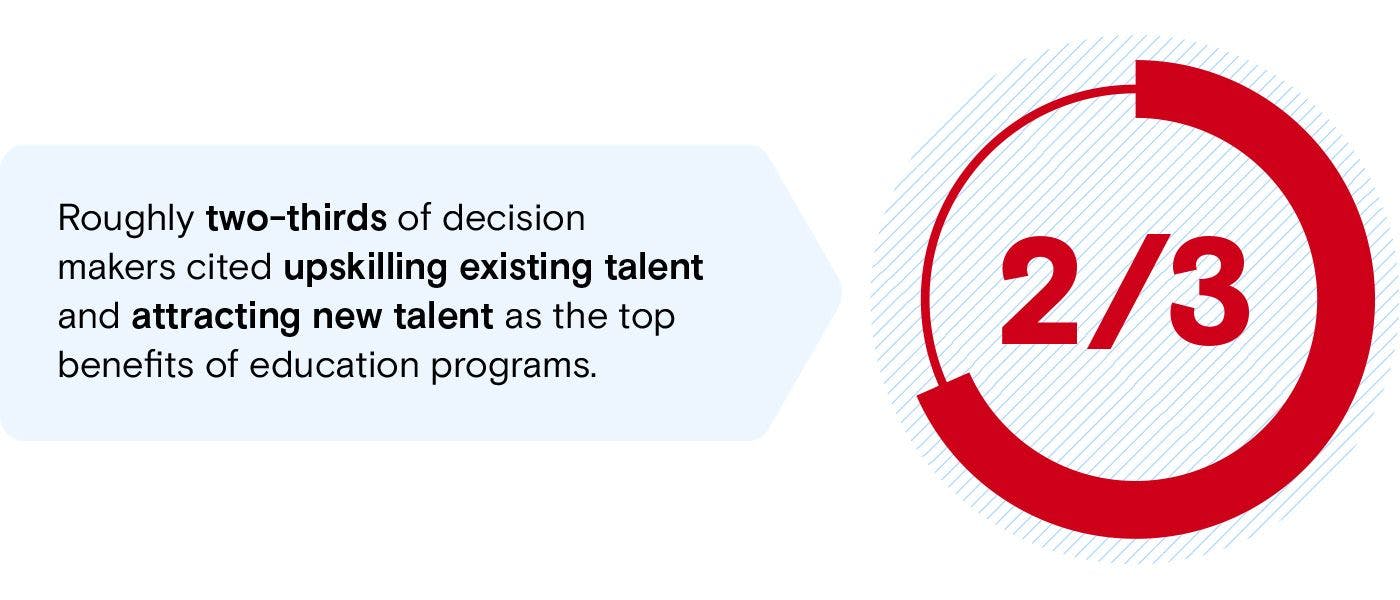Article
January 26th, 2021 · 4 min read
Industry 4.0: The power of looking beyond re-training to skills fulfillment

In the age of Industry 4.0, COVID-19 continues to accelerate the rise of automation and greater digital connectivity. Organizations looking to keep up with these changes must adapt with a people-first approach and develop their workforce by dedicating resources to stay ahead.
Below is a Q&A session with Rodney Grover, Vice President of Corporate Partnerships at InStride, that discusses why businesses need to focus on skills fulfillment and not just re-training in the era of industry 4.0. He also provides insights into how to unlock employee, business and industry growth, as this next stage in digital transformation continues to unfold.
What is Industry 4.0?
Industry 4.0, also known as the fourth industrial revolution, includes greater connectivity of automated processes that further leverages technology, such as cloud computing, machine learning and real-time data. At the core, Industry 4.0 provides companies the opportunity to gain increased transparency into their operations, plus automate and streamline efficiencies to enable greater returns.
What is the influence of COVID-19 on Industry 4.0 and the skills gaps?
Even before the global pandemic, automation in the workplace resulted in the evolution of jobs, along with the imperative skills employees need to keep up with for Industry 4.0 advances. Continually updated skills are necessary for the management of new technologies for data administration, privacy, cybersecurity and more.
In fact, 68 percent of business leaders recognize there are skills gaps in the workforce that hamper their organizations’ growth. Since the start of COVID-19, 35 percent said the skills gaps have widened.

This leaves many companies challenged with a workforce and talent pool that is not equipped to fill both existing and new jobs.
What is the role of workforce education when it comes to the opportunity gaps highlighted by Industry 4.0?
Workforce education programs play an essential role in the current economy and deliver a positive impact to companies. Yet, they need to be the right ones. Traditional education programs are not gaining enough momentum to close the widening skills gap and meet the needs of Industry 4.0. In contrast, workforce programs that are strategically customized to meet a business’ specific needs have tremendous potential.
Often companies can identify what skills are lacking, yet have a very difficult time tying them to real opportunities. A customized workforce education program takes a strategic approach to clearly laying out and identifying paths for both prospective and current employees.

Which industries are affected most by Industry 4.0 and automation?
The skills gaps and retraining challenge will have a higher impact on sectors such as manufacturing, transportation and retail. The predictable, repetitive operational tasks associated with these sectors make them particularly suitable for two Industry 4.0 trends -- automation or digitization.
When it comes to Industry 4.0, about 60 percent of all jobs could potentially have 30 percent of their core competencies replaced by automation.
How can you reap the benefits of taking a strategic approach to workforce education in the age of Industry 4.0?
Company leadership must focus on building, growing and retaining top talent to compete and thrive in this next industrial revolution. There are more opportunities for businesses and employees alike if you lean into new skills development with a customized workforce program that includes:
- Goals alignment: Talent development is a line of business that can't simply fall on L&D and human resources. So, start with identifying areas tied to KPIs across the entire organization, such as total time to new employee productivity for human resources or rate of new technology implementation for production operations. Then get leadership from those areas involved in every aspect of the learning and development process.
- Skills fulfillment: Be forward thinking beyond job roles, as technology will dictate future skill sets and job descriptions. Explore opportunity gaps by aligning your organization's technology and process maps to existing skill sets. For example, think about an IT lead taking on a leadership role in research and development.
- People as assets: View your employees as assets and invest in them. By providing quality workforce education paths, you enable employees to advance in their careers, which leads to meaningful impact for them, your company and the greater community.
Education is not a tactic. It's a valuable strategy for businesses, especially in the Industry 4.0 era. Learn more about how to take a strategic approach to education that can transform your workforce by contacting one of our education experts today.

You can address talent development challenges
See how a partnership with InStride can meet the challenges of tomorrow, with action today.





